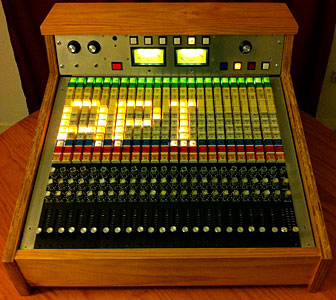

Old API consoles consisted of a bunch of channels and a separate monitor section for monitoring tape returns during the recording phase. The monitor section was sometimes used during the mixdown phase to serve as additional effects returns, although this involved modifications to add these returns to the main mix.
Each channel of the API monitor section could select between the console group outputs and the tape returns, controlled by master console status switches and a "Sync" button on each monitor channel. Each channel had 4 Cue sends and 2 Echo Sends, but each pair of sends shared a single level control. The cue source behaved differently, depending on the master console status. The API cosoles were quad desks, so there were four mix busses. There were no pan controls.
The monitor section also controlled the source for the console channel meters and included the meter driver amplifiers.
This arrangement was always cumbersome to use, because the console had to be reconfigured for two distinct operations - recording and mixdown - which involved a lot of switching and re-patching. The "inline" approach, as pioneered by MCI, was vastly superior in operation.
As time went by, DAWs replaced tape machines and software plugins replaced much of the outboard gear. Consoles tended to be used as front ends for recording and mixing down stems in the mixdown process (if at all). The monitor section ended up laying dormant.
In one case, the owner decided to remove the monitor section to make room for some outboard gear. In another case, the owner actually chopped off the end of the console (the frame was made of wood), making a neat little 24 channel recording console.
This project was one of two where we tried to make something useful out of the monitor sections from API consoles.